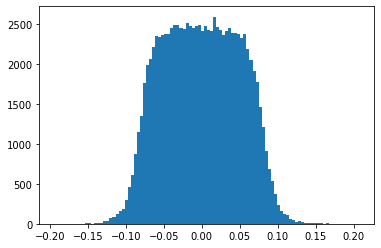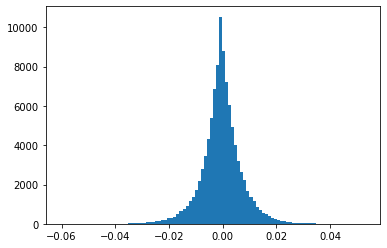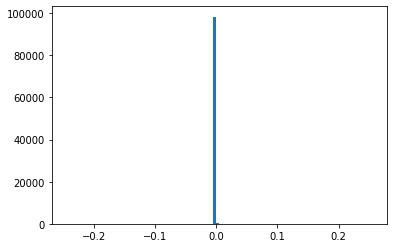LAB 2.1 - Customized loss function#
!wget -nc --no-cache -O init.py -q https://raw.githubusercontent.com/rramosp/2021.deeplearning/main/content/init.py
import init; init.init(force_download=False); init.get_weblink()
from local.lib.rlxmoocapi import submit, session
import inspect
session.LoginSequence(endpoint=init.endpoint, course_id=init.course_id, lab_id="L02.01", varname="student");
Loading the Fashion MNIST database…#
import os
import gzip
import numpy as np
import matplotlib.pyplot as plt
import warnings; warnings.simplefilter('ignore')
import tensorflow as tf
tf.__version__
from keras import datasets
(x_train, y_train), (x_test, y_test) = datasets.fashion_mnist.load_data()
X_train = x_train.reshape(x_train.shape[0],x_train.shape[1]*x_train.shape[2])
X_test = x_test.reshape(x_test.shape[0],x_test.shape[1]*x_test.shape[2])
from keras import utils
from sklearn.preprocessing import StandardScaler
input_dim = X_train.shape[1]
scaler = StandardScaler()
X_trainN = scaler.fit_transform(X_train)
X_testN = scaler.transform(X_test)
# convert list of labels to binary class matrix
y_trainOHE = utils.to_categorical(y_train)
nb_classes = y_trainOHE.shape[1]
TASK 1. Basic model#
Define a new model using the keras sequential API. The model must have four hidden layers with the following neurons [128,64,32,16]. Comply with the following:
For all the hidden layers use the
reluactivation function.Use
nb_classesandsoftmaxactivation for the output layer.Specify all activations as part of the
Denselayer parameter, not as a separate layer.You must return an instance of a
Sequentialmodel.DO NOT invoke
compileorfit.
Your model structure should be as follows
Model: "sequential_64" _________________________________________________________________ Layer (type) Output Shape Param # ================================================================= dense_308 (Dense) (None, 128) 100480 _________________________________________________________________ dense_309 (Dense) (None, 64) 8256 _________________________________________________________________ dense_310 (Dense) (None, 32) 2080 _________________________________________________________________ dense_311 (Dense) (None, 16) 528 _________________________________________________________________ dense_312 (Dense) (None, 10) 170 ================================================================= Total params: 111,514 Trainable params: 111,514 Non-trainable params: 0 _________________________________________________________________
def get_basic_model(input_dim, nb_classes):
from tensorflow.keras.models import Sequential
from tensorflow.keras.layers import Dense
model = ...
return model
model = get_basic_model(input_dim=784, nb_classes=10)
model.summary()
Registra tu solución en linea
student.submit_task(namespace=globals(), task_id='T1');
Run the following cells to train and test the model.
model = get_basic_model(input_dim=784, nb_classes=10)
from tensorflow.keras import regularizers, optimizers
# or instantiate an optimizer before passing it to model.compile
sgd = optimizers.SGD(learning_rate=0.01, momentum=0.9, nesterov=True)
model.compile(loss='categorical_crossentropy', optimizer=sgd)
model.fit(X_trainN[:500,:], y_trainOHE[:500,:], epochs=1000, batch_size=16, validation_split=0, verbose=0)
preds = model.predict(X_testN, verbose=0)
preds = np.argmax(preds,axis=1)
Accuracy = np.mean(preds == y_test)
print('Accuracy = %.2f%s'%(Accuracy*100, '%'))
UNGRADED TASK: Create a graph with the histogram of the network weigths in the first hidden layer. It should look like the the following.
from IPython.display import Image
Image("local/imgs/L21W1.png")

plt.hist(..., bins=100);
TASK 2: \(L_2\) regularization#
Create a model like on TASK 1, but include \(L_2\) regularization to every hidden layer (in kernel_regularizer) with a regularization parameter equal to 0.001.
def get_L2_model(input_dim, nb_classes):
from tensorflow.keras.models import Sequential
from tensorflow.keras.layers import Dense
from tensorflow.keras import regularizers
model = ...
return model
model = get_L2_model(784, 10)
model.summary()
inspect layer regularizers
for layer in model.layers:
print (layer.name, '-->', layer.kernel_regularizer)
Registra tu solución en linea
student.submit_task(namespace=globals(), task_id='T2');
Run the following cell to train and test the model
from tensorflow.keras import optimizers
model = get_L2_model(784, 10)
# or instantiate an optimizer before passing it to model.compile
sgd = optimizers.SGD(learning_rate=0.01, momentum=0.9, nesterov=True)
model.compile(loss='categorical_crossentropy', optimizer=sgd)
model.fit(X_trainN[:500,:], y_trainOHE[:500,:], epochs=1000, batch_size=16, validation_split=0, verbose=0)
preds = model.predict(X_testN, verbose=0)
preds = np.argmax(preds,axis=1)
Accuracy = np.mean(preds == y_test)
print('Accuracy = %.2f%s'%(Accuracy*100, '%'))
UNGRADED TASK: Create a graph with the histogram of the network weigths in the first hidden layer. It should look like the the following.
Compare it with the histogram obtained in the previous exercise. Is there any effect due to the regularization?
from IPython.display import Image
Image("local/imgs/L21W2.png")

plt.hist(..., bins=100)
TASK 3: \(L_1\)+\(L_2\) regularization#
Create a model like on TASK 1, but use \(L_1\)+\(L_2\) regularization to every hidden layer (in kernel_regularizer) with both regularization parameters equal to 0.001.
Use tf.keras.regularizers.L1L2
def get_L1L2_model(input_dim, nb_classes):
from tensorflow.keras.models import Sequential
from tensorflow.keras.layers import Dense
from tensorflow.keras import regularizers
model = ...
return model
model = get_L1L2_model(784, 10)
model.summary()
inspect layer regularizers
for layer in model.layers:
print (layer.name, '-->', layer.kernel_regularizer)
Registra tu solución en linea
student.submit_task(namespace=globals(), task_id='T3');
Run the following cell to train and test the model
from tensorflow.keras import optimizers
model = get_L1L2_model(784, 10)
# or instantiate an optimizer before passing it to model.compile
sgd = optimizers.SGD(learning_rate=0.01, decay=1e-6, momentum=0.9, nesterov=True)
model.compile(loss='categorical_crossentropy', optimizer=sgd)
model.fit(X_trainN[:500,:], y_trainOHE[:500,:], epochs=1000, batch_size=16, validation_split=0, verbose=0)
preds = model.predict(X_testN, verbose=0)
preds = np.argmax(preds,axis=1)
Accuracy = np.mean(preds == y_test)
print('Accuracy = %.2f%s'%(Accuracy*100, '%'))
UNGRADED TASK: Create a graph with the histogram of the network weigths in the first hidden layer. It should look like the the following.
Compare it with the histograms obtained in the previous exercises. What is the effect of applying \(L_1\) regularization?
from IPython.display import Image
Image("local/imgs/L21W3.png")

plt.hist(..., bins=100)
Create a graph with the histogram of the network weigths in the first hidden layer. Compare it with the histograms obtained in the previous exercises. What is the effect of applying \(L_1\) regularization?
TASK 4: Customized loss function#
Complete the function below to implement the following loss function:
which corresponds to a weighted version of the categorical cross entropy loss function (take a look to the section 2.2 to remember the notation of the categorical cross-entropy loss function).
Note the following observations:
the function below returns a function tied to a specific set of weights. This way we can create different loss functions tied to different weights.
you can assume
y_predto be the output of a softmax layer. This is, that for eachythere is a predicted probability for each class \(\in [0,1]\) and summing all up to 1.before using the
tf.mat.logfunction, passy_predthroughtf.clip_by_valueto ensure any value is betweenK.epsilon()and1-K.epsilon(). This is to avoid extreme values close to0or close to1which might cause numerical issues.both
y_predandy_truewill be tensors of shape(m,c)withmbeing the number of data points andcthe number of classes.your answer must be accurate up to three decimal number.
use
tf.reduce_meanfor the first summation, andtf.reduce_sumfor the second summation with the correspondingaxisargument.
HINT: experiment and understand tf.reduce_mean and tf.reduce_sum before implementing the function
from tensorflow.keras import backend as K
K.epsilon()
z = np.random.randint(100, size=(3,5))
print (z)
print (tf.reduce_mean(z))
print (tf.reduce_sum(z, axis=0))
def weighted_categorical_crossentropy(weights):
from tensorflow.keras import backend as K
def loss_function(y_true, y_pred):
# clip y_pred to prevent NaN's and Inf's
y_pred = ...
# compute loss
loss = ...
return loss
return loss_function
manually test your code with the following cases
y_pred = np.array([[0.14285714, 0. , 0.68367347, 0.17346939],
[0.01020408, 0.60714286, 0.10204082, 0.28061224],
[0.1733871 , 0.29435484, 0.24193548, 0.29032258],
[0.25403226, 0.24596774, 0.19758065, 0.30241935],
[0.52073733, 0.10138249, 0.11981567, 0.25806452],
[0.47843137, 0.05882353, 0.24313725, 0.21960784]]).astype(np.float32)
y_true = np.array([[0, 1, 0, 0],
[0, 1, 0, 0],
[0, 0, 0, 1],
[0, 0, 0, 1],
[1, 0, 0, 0],
[1, 0, 0, 0]]).astype(np.float32)
loss = weighted_categorical_crossentropy([1,1,1,1])
print ("loss", loss(y_true, y_pred).numpy()) # this should return 3.4066
loss = weighted_categorical_crossentropy([2,3,4,5])
print ("loss", loss(y_true, y_pred).numpy()) # this should return 10.7990
test with random data
m,c = np.random.randint(5)+5,np.random.randint(3)+2
y_true = np.eye(c)[np.random.randint(c, size=m)].astype(int)
y_pred = np.abs(y_true + np.round(np.random.random(size=(m,c)),2)*2 - .5)
y_pred[0,np.argmax(y_true[0])]=0 # force some zero to check clipping
y_pred /= np.sum(y_pred,axis=1).reshape(-1,1).astype(np.float32)
w = np.round(np.random.random(size=c)*10+1,2)
print("y_true:\n", y_true)
print("y_pred:\n", y_pred)
print ("w:", w)
loss = weighted_categorical_crossentropy(w)
print ("\nloss: ", loss(y_true, y_pred).numpy())
Registra tu solución en linea
student.submit_task(namespace=globals(), task_id='T4');
UNGRADED TASK
Test your loss function in model. Use the weighted categorical cross entropy function to train the MLP model on the Fashion MNIST dataset with 2 hidden layers of 64 and 32 neurons respectively. Use the two sets of weights below. Evaluate the model with the test dataset and plot the confusion matrix.
Your should get confusion matrices such as the ones below. Left is with weights0, center with weights1 and right with weights2. Observe what classes improve their accuracy based on the weights.
Image("local/imgs/L2.1_W.png")

weights0 = np.array([1,1,1,1,1,1,1,1,1,1])
weights1 = np.array([1,1,1,1,1,1,4,1,1,1])
weights2 = np.array([1.5,1,1,1,1,1,4,1,1,1])
def confusion_matrix(y_true, y_pred):
from sklearn.metrics import confusion_matrix
objects = ('Ankle Boot', 'Bag', 'Sneaker', 'Shirt', 'Sandal', 'Coat', 'Dress', 'Pullover', 'Trouser', 'T-shirt/top')
cm = confusion_matrix(y_true, y_pred)
cm = cm/np.sum(cm,axis=1)
cmap = plt.cm.Blues
tick_marks = np.arange(nb_classes)
fig, ax = plt.subplots(figsize=(10,10))
im = ax.imshow(cm, interpolation='nearest', cmap=cmap)
for i in range(cm.shape[0]):
for j in range(cm.shape[1]):
text = ax.text(j, i, np.around(cm[i, j],decimals=2),
ha="center", va="center", color="w")
plt.title('Normalized confusion matrix')
fig.colorbar(im)
plt.xticks(tick_marks, objects, rotation=45)
plt.yticks(tick_marks, objects);

